Oil Targets
Germany had only meagre natural deposits of crude oil under its surface which were woefully inadequate to meet demand.
To reduce the reliance on imported oil, between 1910 -1925, German scientists developed two methods of converting coal into petroleum and other oil based products.
In 1927, the chemical giant IG Farben built its first synthetic fuel plant at Leuna. This location was close to plentiful supplies of lignite (brown coal).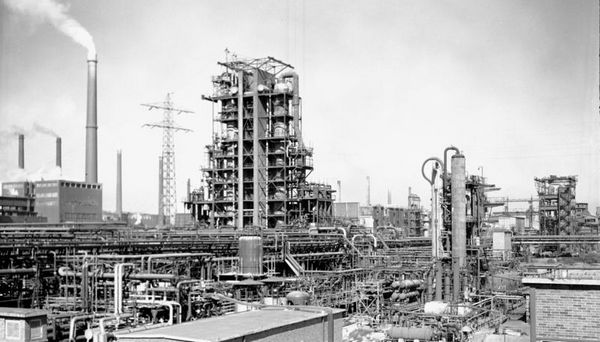
By 1945 there were a total of twenty-one synthetic fuel facilities throughout Germany.......twelve hydrogenation plants and nine using the Fischer-Tropsch method. These facilities relied heavily on slave labour which, in 1944, made up 33% of the work force
These plants were vital to the war effort..........at the time of the invasion of Poland in September 1939 synthetic fuel facilities produced 74 MBD (MBD=1000 barrels per day) and provided 46% of the total German oil supply and 95% of the aviation fuel required by the military.
Between 1940 and 1943, synthetic fuel production almost doubled to 124 MBD and provided 57% of total German oil consumption including 92% of aviation fuel.
It was necessary to defend these plants at all costs and, in many cases, dummy sites were used.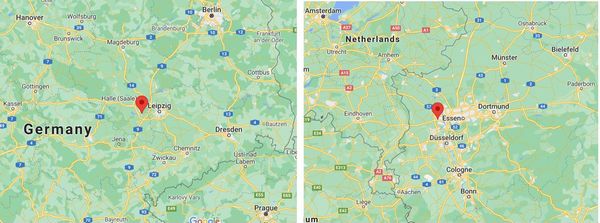
Two of the synthetic fuel plants for which there are records of the effectiveness of the decoy sites.....Leuna and Meerbeck
The RAF first attacked Leuna during the night of 16-17th August 1940 but with minimal damage reported.
The plant was attacked by the RAF on four other occasions in 1940 but the raids were small and only a few bombs hit the plant.
The main raids began in the spring of 1944 as part of the Allied air campaign against oil targets.
Eighteen of the twenty-two raids on Leuna were conducted in daylight by the USAF and the remaining four were night attacks by the RAF.
It is therefore likely that the decoy technique employed (in addition to smoke) was to construct dummy facilities.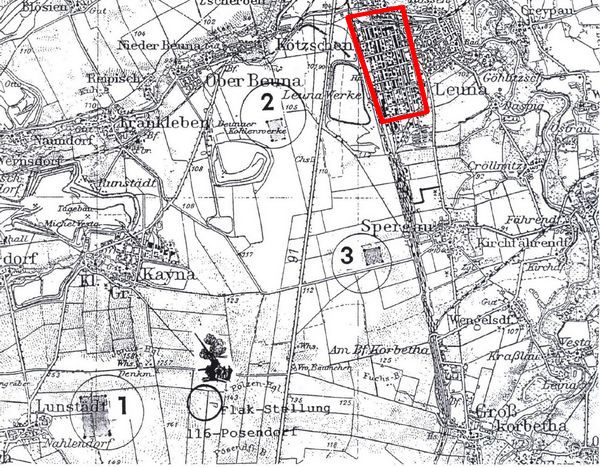
The location of three dummy installations near the Leuna Werke
During the first seven attacks more bombs (4550) were dropped on the decoy sites than on the real facilities.
Unfortunately for the Germans, later raids had better target intelligence and Leuna suffered increasing amounts of damage.
The final raids were conducted by the RAF in January and April 1945 and production was brought to a halt.....the January raid was especially destructive.
It is interesting to note that the 4000lb 'cookies' dropped by the RAF did significantly more damage than the equivalent weight of smaller bombs.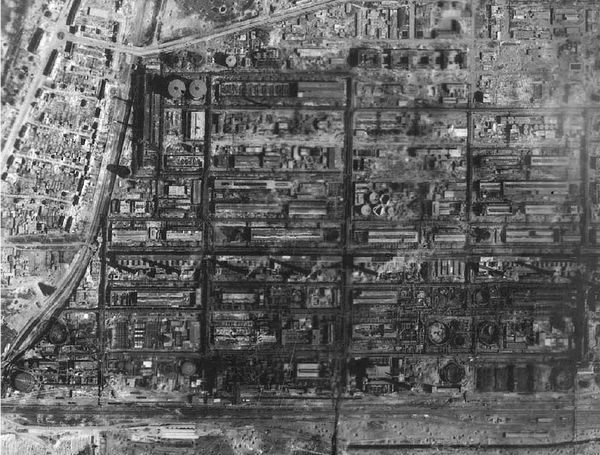
At the end of the day, decoy systems could not save Leuna.........the devastated plant in April 1945
The first commercial-size Fischer-Tropsch facility to produce synthetic fuel was the Steinkohlen- Bergwerk Rheinpreussen plant located in Mörs-Meerbeck (Homberg, Ruhr) near the Rheinpreussen coal mine.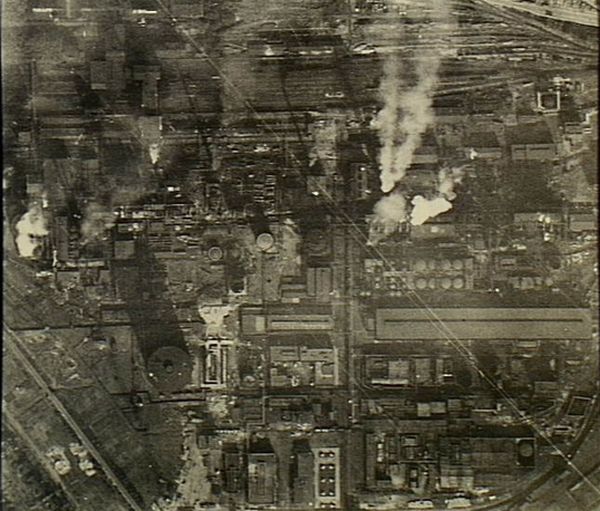
The complexities of a synthetic fuel plant are less obvious when viewed from above.
Mörs-Meerbeck blended into the 'industrial landscape'
The US Strategic Bombing Survey noted that a dummy plant located 5km from the real facility proved "very effective until 1944".
The RAF attacked Meerbeck 41 times with 23,926 high explosive bombs and almost 104,000 incendiaries.
The survey reported evidence of only 328 bomb craters within the real plant area.
Due to the difficulty of hitting a small target at night and/or the success of the decoy site, the number of craters indicate that less than 2% of all the high explosive bombs hit the real facility.
Germany had access to 'the goose that lays the golden egg' in the Romanian oilfields and refineries.
These provided 70% of Germany's crude oil requirements and 35% of all grades of petrol/diesel - these figures vary in different reports but the common factor is the recognition of the importance of Romanian oil.
There were nine different refineries in the Ploesti area alone.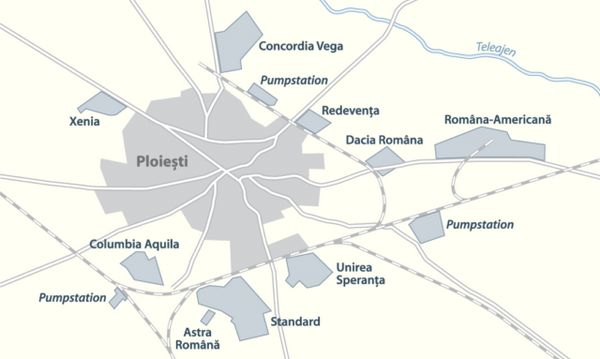
The location of the refineries in the Ploesti area
Two dummy sites were constructed in an effort to fool the Allied bombers. One was 13km north-east and the other, 10km east of the real refineries. However, there are no records that indicate how successful these dummy facilities were.
The actual refineries were protected by large numbers of anti-aircraft guns and over 200 fighters were available.
However, the main method of defence was the smoke screen.
The Allied attacks on Ploesti began in August 1943 and were mainly conducted by the USAF.
The RAF joined in during July/August 1944 from bases in Italy.
There are many excellent websites that give details of these raids........two examples are linked below (open in a new window).
War History Online
Ploesti Memorial AssociationRemembering Operation Tidal Wave
When Romania changed sides in August 1944 the already reduced supply of oil dried up completely and Germany was forced to rely almost totally on its synthetic fuel facilities.